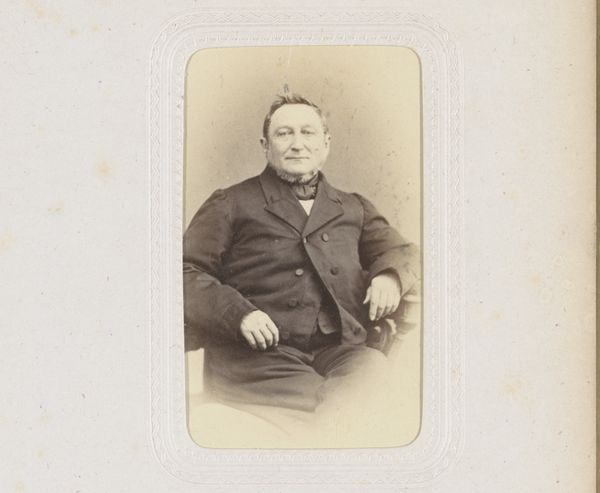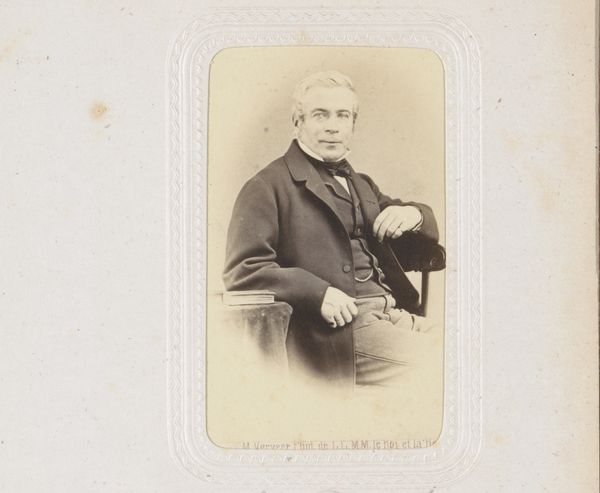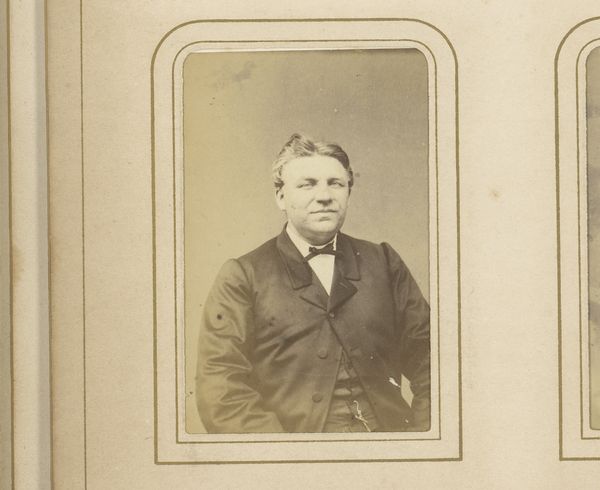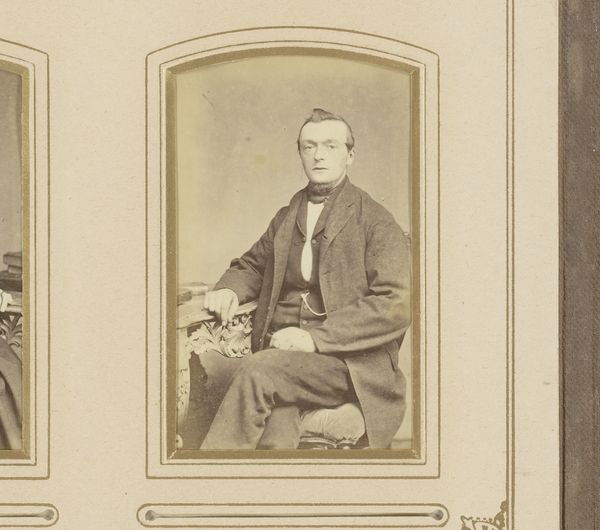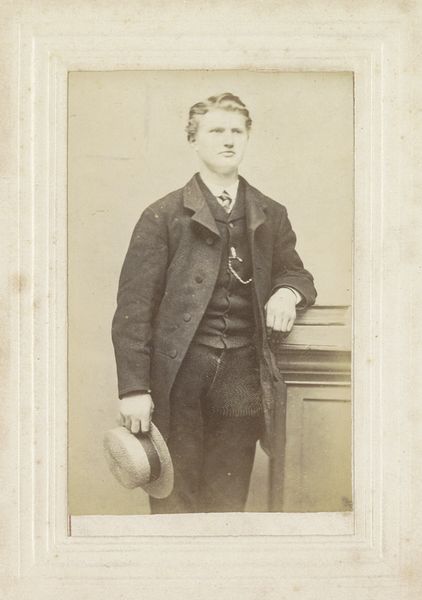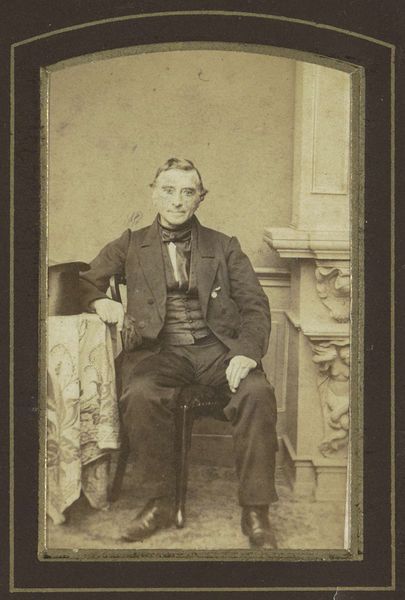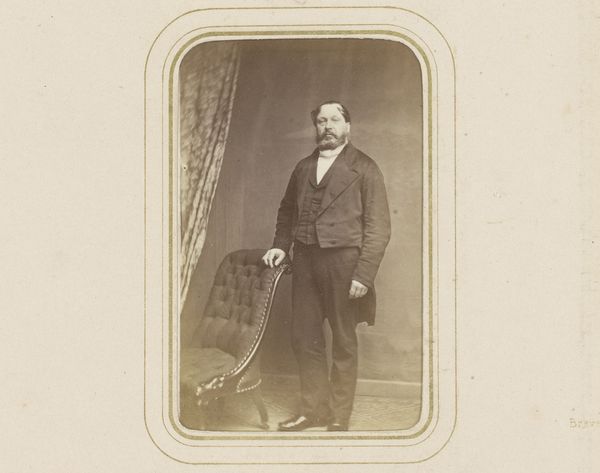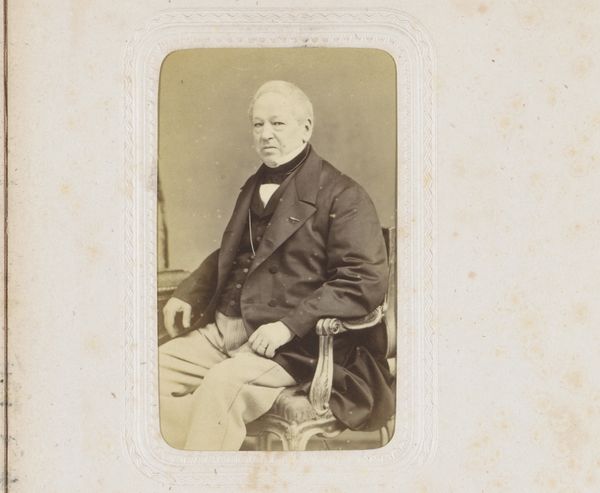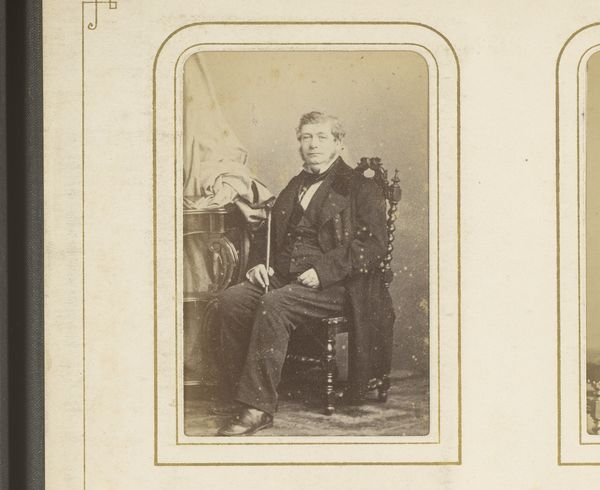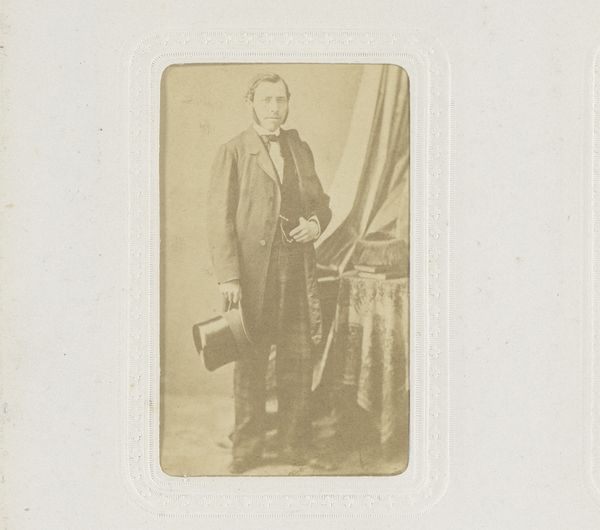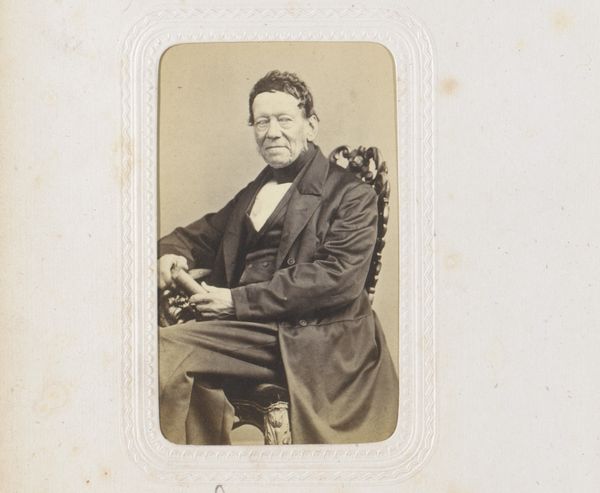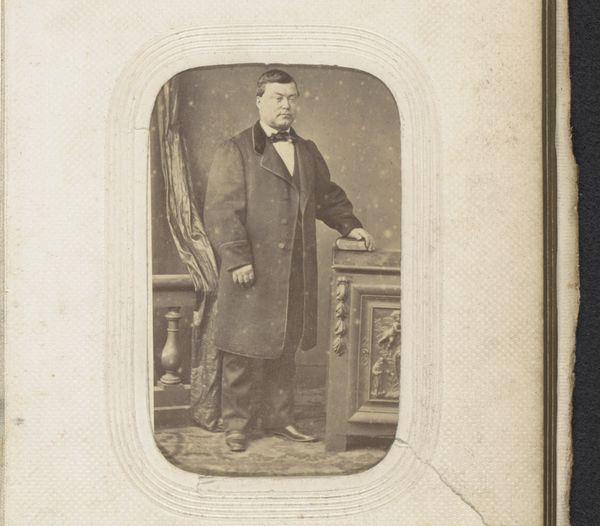
Dimensions: height 82 mm, width 50 mm
Copyright: Rijks Museum: Open Domain
This portrait of Cornelis Rudolphus Hermans was created by Leonard Stollenwerk, using the then-new technology of photography. Photography in this era was a chemical process as much as an aesthetic one, and required a deep knowledge of materials. The artist had to prepare light-sensitive surfaces, precisely time exposures, and then develop the images in a darkroom. The resulting sepia tones are due to the chemical reactions involved, resulting in this monochromatic brown scale. Photography democratized portraiture, making it accessible to a broader public. This new form of image-making relied on chemistry and optics rather than artistic skill, therefore, it blurred the lines between art and industry. The rise of photography reflects the increasing mechanization of life, the changing social dynamics of labor, and the consumption of imagery. By considering the material processes and social context of photography, we can gain a deeper understanding of its cultural significance, challenging the divisions between fine art and craft.
Comments
No comments
Be the first to comment and join the conversation on the ultimate creative platform.

